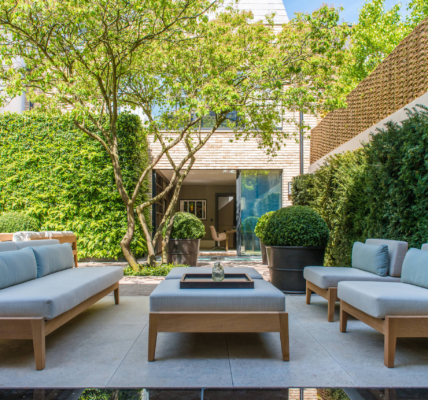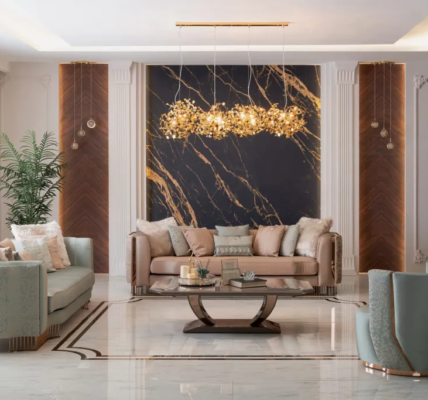The UK property market trends evolve, and as an astute observer, you’re well aware of their profound impact. Among these trends, the surge towards designing accessible homes stands out prominently, a movement that echoes society’s call for inclusivity and equitable living. In your journey towards an accessible home, you won’t walk alone. Estate agents in the UK with a keen understanding of the evolving trends are pivotal in guiding you through the process. Their insights into the nuances of accessible design, coupled with their knowledge of local markets, ensure that your investment aligns seamlessly with your aspirations and needs.
In this article, we will delve into the significance of inclusive living, explore the intricate details of accessible home design, and shed light on how this transformative trend is reshaping the very fabric of the UK real estate landscape.
The Significance of Inclusive Living
As the concept of “home” takes on multifaceted dimensions, it extends beyond mere physical structures. It encompasses comfort, functionality, and an overarching sense of belonging. Inclusive living, at its core, envisions a space where individuals of all ages and abilities can not only navigate but also flourish. This ethos of inclusivity extends to the very heart of communities, fostering connections and understanding among residents from various walks of life. As society shifts towards recognizing the importance of accessibility, the demand for homes that cater to diverse needs is gaining substantial momentum.
Universal Design Principles: Bridging the Gap
At the heart of accessible home design lies a set of universal principles that transcend mere aesthetics. These principles are meticulously crafted to ensure that homes aren’t just spaces you inhabit but environments that adapt seamlessly to your unique requirements. Picture wide doorways and hallways that offer unrestricted movement, step-free entrances that extend a warm welcome, and strategically placed handrails that enhance mobility and independence. These design elements collectively create a living space that caters to your needs without necessitating extensive modifications. This approach isn’t just about accommodating physical limitations; it’s about fostering a sense of empowerment and autonomy for everyone within the household.
Beyond Aesthetics: Incorporating Modern Comfort and Functionality
Moving beyond aesthetics, the evolution of accessible homes in the UK transcends functional requirements, embracing a harmonious blend of contemporary style and innovative functionality. Envision living spaces that seamlessly fuse chic design with practicality, enabling you to relish modern comforts while navigating seamlessly through every nook. Open floor plans promote fluid movement, while fixtures are thoughtfully positioned to enhance convenience. The infusion of intelligently integrated technology further elevates the living experience. Imagine adjusting lighting and temperature with a simple voice command or remotely controlling security systems for added peace of mind.
It’s more than a dwelling; it’s a transformative living environment where design meets utility, where comfort and modernity intertwine effortlessly to enhance your daily life. The accessibility factor enriches each moment, ensuring that your home doesn’t just reflect your style but also supports your lifestyle.
A Shift in Perspective: A Home for All Ages
As you reflect upon accessible living, it’s crucial to grasp that this trend goes beyond age boundaries. Accessible homes extend their embrace across a wide spectrum of occupants, ensuring comfort and convenience at every life phase. Whether for young families embarking on new journeys or seniors seeking serene retreats, the design effortlessly adapts, erasing obstacles and cultivating an environment where each household member can flourish. It’s not just about adapting space for specific needs; it’s about crafting an inclusive haven that evolves harmoniously with life’s transitions, embodying the essence of thriving at any age.
Adding Value Beyond Measure: The Investment of Inclusivity
The influence of accessible home design stretches far beyond personal comfort; it manifests in undeniable value. Properties that embrace inclusivity often experience appreciation, not just in financial terms but also in nurturing a robust sense of community. As you commit to an accessible home investment, you’re not only securing a comfortable dwelling but also actively participating in the larger story of fostering equitable living and upholding social responsibility. Your choice echoes the sentiment that a home is more than walls and floors; it’s an embodiment of values, and a catalyst for positive change.
A Future Built on Inclusivity
In conclusion, the evolution of accessible home design is more than a trend; it’s a movement towards a more inclusive future. The concept of home is no longer confined to the physical; it encompasses an ecosystem of comfort, functionality, and shared experiences. By embracing accessible design, you’re not just shaping your living space; you’re contributing to a broader societal shift towards equitable living. As the UK property landscape continues to evolve, the essence of accessible homes stands as a testament to the power of design in fostering inclusivity and enhancing lives.





